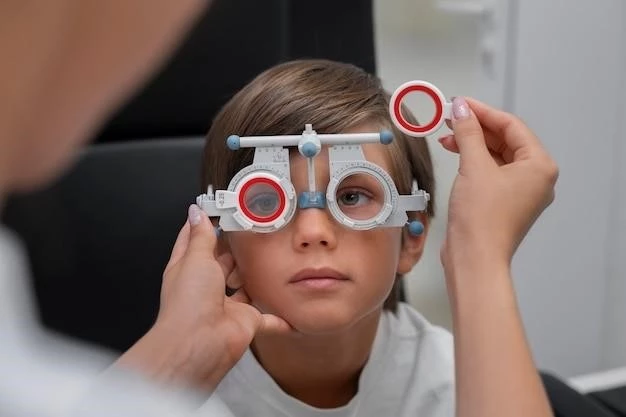Introduction
Strabismus is derived from a Greek word that translates to eyes looking obliquely and means misaligned eyes. Often, strabismic eyes are referred to as squinting eyes, crossed eyes, and wall eyes. Typically, both eyes fixate equally while focusing on an object with the head held in the primary position.
Strabismus, also known as crossed eyes, is a condition where the eyes are misaligned and point in different directions. This misalignment can occur constantly or intermittently, affecting individuals of all ages. If left untreated, strabismus can lead to complications such as double vision, lazy eye (amblyopia), and reduced depth perception. The condition arises due to the inability of the eye muscles to work together effectively, resulting in the eyes not aligning properly and causing visual disturbances. Treatment options include corrective lenses, eye exercises, surgery, and other interventions aimed at restoring proper alignment and preventing vision-related complications.
Causes and Risk Factors
Strabismus can occur due to a variety of factors, including issues with eye muscles, nerves, or brain control, leading to misalignment of the eyes. Risk factors include family history, certain medical conditions, or previous eye injuries that can contribute to the development of strabismus.
Definition of Strabismus
Strabismus, also known as crossed eyes, is a vision disorder characterized by the misalignment of the eyes when focusing on an object. This misalignment can be constant or intermittent and may lead to complications such as amblyopia (lazy eye) and loss of depth perception. The condition arises from difficulties in the coordination of eye muscles, resulting in one or both eyes not aligning correctly. Treatment options range from corrective lenses to surgical interventions, aiming to restore proper alignment and prevent further vision-related issues.

Symptoms and Diagnosis
Strabismus can be recognized by misaligned eyes, where one or both eyes deviate inwards or outwards. Symptoms include double vision, eye strain, and trouble with depth perception. Diagnosis involves a comprehensive eye examination by an eye care professional to assess eye alignment and visual acuity, helping determine the extent of the condition.
Recognizing Strabismus in Children and Adults
Strabismus, characterized by misaligned eyes, is noticeable when one or both eyes deviate inward or outward. It can lead to double vision, eye strain, or difficulty focusing, impacting individuals of all ages. The condition can be diagnosed through a comprehensive eye exam, assessing eye alignment and visual acuity to determine the presence and severity of strabismus.
Treatment Options
Strabismus can be managed through various approaches including eye exercises, corrective lenses, surgery, and Botox injections. These treatments aim to restore proper eye alignment and coordination, improving binocular vision and preventing vision-related complications.
Various Approaches to Treating Strabismus
Strabismus treatment options encompass a variety of methods such as eye exercises, corrective lenses, surgery, and Botox injections. These approaches aim to address the misalignment of the eyes, improve eye coordination, and mitigate the visual disturbances associated with strabismus.
Strabismus Surgery
Strabismus surgery, an eye muscle surgery, aims to correct misaligned eyes that do not respond to other treatments. By adjusting the eye muscles, the procedure aligns the eyes for improved coordination and functionality. Learn about the types, risks, benefits, and recovery associated with this surgical intervention.
Overview of Eye Muscle Surgery for Strabismus
Strabismus surgery, a form of eye muscle surgery, is performed to correct misaligned eyes that have not responded to non-surgical treatments. During the procedure, adjustments are made to the eye muscles to properly align the eyes, improving coordination and visual alignment. Understanding the different types of strabismus surgery, its associated risks, benefits, and post-operative recovery process can provide valuable insights for individuals considering this surgical option.
Prevention and Management
Preventive measures for strabismus include early detection in children, regular eye examinations, and prompt treatment to prevent complications. Effective management involves a combination of therapies tailored to each individual’s needs, aiming to improve eye alignment and coordination for better visual outcomes.
Preventive Measures for Strabismus
Preventive measures for strabismus include early detection in children through regular eye examinations and prompt treatment to prevent complications like lazy eyes and loss of depth perception. Early intervention can significantly improve the prognosis and long-term outcomes for individuals with strabismus.

Complications and Prognosis
Understanding the outlook and success rates of strabismus surgery is essential for individuals considering this treatment option. While the procedure is generally safe and effective, success rates vary depending on factors such as the type of strabismus and individual response to surgery. It’s important to discuss potential complications and long-term prognosis with a healthcare provider.
Understanding the Outlook and Success Rates of Strabismus Surgery
Strabismus surgery, aimed at correcting misaligned eyes, carries a success rate that can vary based on individual factors and the type of strabismus being addressed. While the procedure is generally safe and effective, it’s crucial to consider potential complications and discuss the long-term prognosis with a healthcare provider to set realistic expectations post-surgery.
Strabismus, often referred to as crossed eyes, is a common condition that can affect both children and adults. With various treatment options available, including surgery, eye exercises, and corrective lenses, individuals can manage this misalignment issue effectively. Understanding the outlook, success rates, and potential complications of strabismus surgery is crucial for making informed decisions about eye care interventions. By prioritizing early detection, prompt treatment, and tailored management strategies, individuals can enhance their visual outcomes and prevent long-term complications associated with strabismus.
